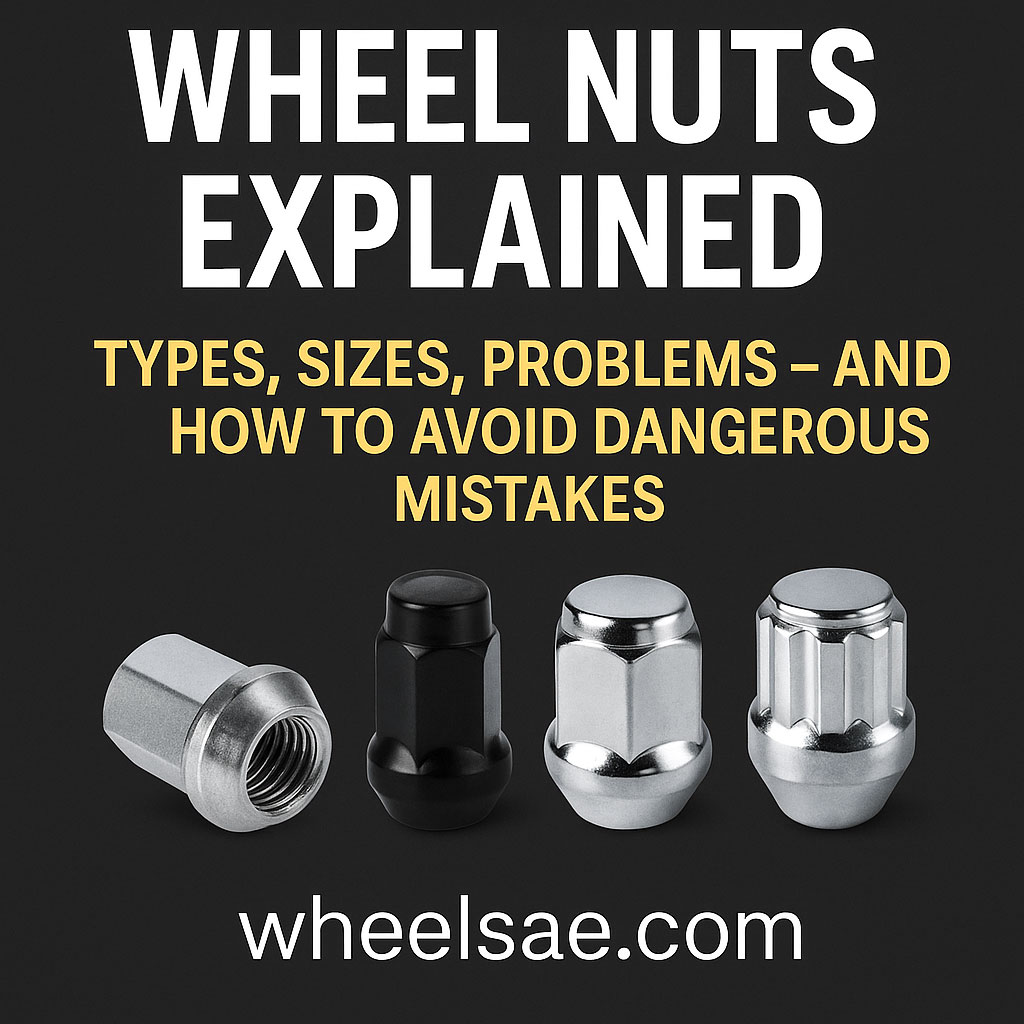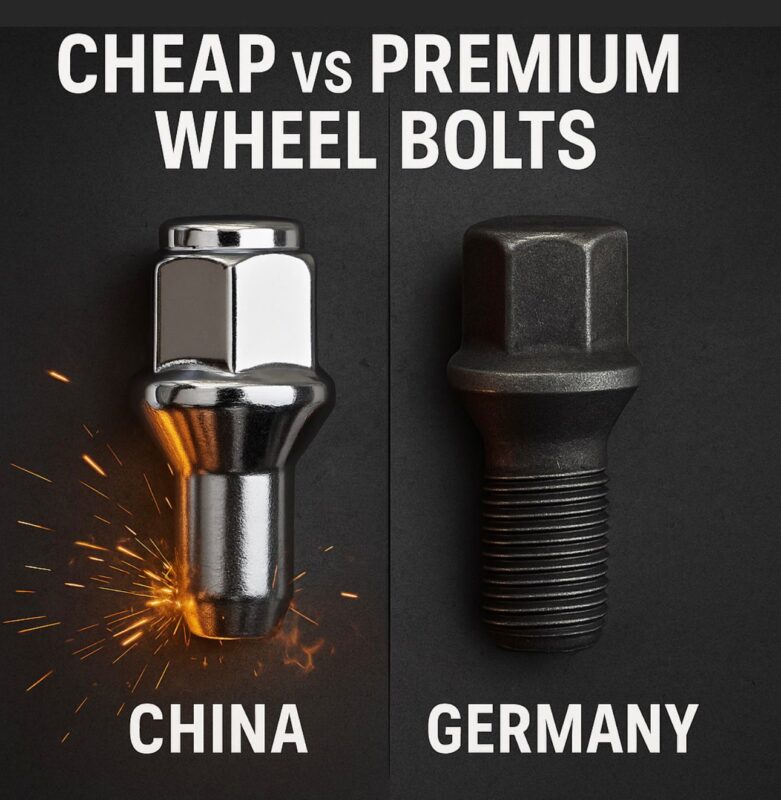Wheel Nut
1. Introduction
When it comes to wheels, wheel nuts (also called lug nuts) are one of the most overlooked yet critical parts of your vehicle. They secure the wheels to the hub, carry immense load, and keep you safe—at high speeds, on bumpy roads, or during sudden stops.
Unfortunately, many drivers either ignore them or choose the wrong type, leading to accidents, damage, or even complete wheel detachment.
In this complete guide, you’ll learn everything you need to know about wheel nuts—types, sizes, risks, and how to avoid the most dangerous mistakes.
⸻
2. What Are Wheel Nuts?
Wheel nuts are fasteners that hold a wheel to the threaded studs on your vehicle’s hub. They come in various designs depending on your car model, aftermarket rims, and bolt pattern. While they may seem small, they are essential for safety.
Without properly installed or correct-size nuts, even the most expensive wheels are useless—or worse, dangerous.
⸻
3. Wheel Nut vs. Bolt: The Key Difference
Some vehicles—especially German cars like BMW or Mercedes—use wheel bolts instead of nuts.
• Wheel nuts: Fasten onto studs attached to the hub (common in Japanese, Korean, and American vehicles).
• Wheel bolts: Thread directly into the hub (common in German cars).
Knowing which system your car uses is the first step in choosing the right product.
⸻
4. Types of Wheel Nuts
There are multiple types of lug nuts, and choosing the wrong one can damage your wheels or make them impossible to install. The most common types include:
• Acorn (conical seat)
• Ball seat (rounded base)
• Flat seat (washer-type)
• Tuner nuts (small diameter, require special key)
• Spline drive (multiple narrow grooves, anti-theft)
• Locking nuts (anti-theft with unique key pattern)
⸻
5. Popular Lug Nut Seat Types
The seat of the nut is where it contacts the wheel surface. Matching the seat type is essential for safety and preventing damage.
• Conical Seat (60° taper): Most common, especially for aftermarket wheels.
• Ball Seat (Radius): Found on many OEM wheels, especially VW and Audi.
• Flat Seat: Used on some aftermarket rims and trucks.
❗ Using the wrong seat type can result in uneven clamping force, loosening while driving, or cracked wheels.
⸻
6. Tuner, Locking, and Spline Nuts
Tuner Nuts
Small-diameter nuts designed for aftermarket wheels with tight lug holes. Require a special tool/key.
Locking Nuts
Designed to prevent theft. Only removable with a matching pattern key.
Spline Drive Nuts
Feature external grooves and require a spline socket. Offer more torque distribution and anti-theft benefit.
⸻
7. Common Thread Sizes and Bolt Patterns
Each vehicle has specific thread size, pitch, and bolt pattern. Common thread sizes:
• M12x1.25 – Subaru, Nissan, some Toyota
• M12x1.5 – Honda, Hyundai, Mazda, Toyota
• M14x1.5 – BMW, Mercedes-Benz, Audi
• 7/16”, 1/2”, 9/16” – Some American trucks and SUVs
Bolt patterns must also match your rim. Common patterns: 5×114.3, 5×112, 6×139.7.
⸻
8. How to Choose the Right Wheel Nuts
To avoid costly mistakes:
✅ Match seat type with the wheel
✅ Check thread size and pitch (don’t assume!)
✅ Measure length (especially with aftermarket wheels)
✅ Use hub-centric rings if needed
✅ Confirm nut socket clearance (deep-dish wheels may need tuner nuts)
If you’re unsure, consult with an expert or check the wheel and car manufacturer’s guide.
⸻
9. Mistakes That Damage Wheels and Hubs
❌ Using ball seat on conical wheels
❌ Over-tightening nuts
❌ Using wrong torque wrench setting
❌ Mixing thread sizes (M12x1.25 vs M12x1.5)
❌ Applying anti-seize on threads (can cause overtightening)
These mistakes not only damage the nuts, but also your rims, brake rotors, or hubs.
⸻
10. Reusing Wheel Nuts: Is It Safe?
In many cases, yes—but only if:
• Threads are clean and not stripped
• The seat isn’t damaged or worn
• The nut hasn’t been over-tightened multiple times
For high-performance or track use, always use new nuts.
⸻
11. Torque Settings and Tightening Best Practices
Under-tightening can cause wheel loss.
Over-tightening can damage the studs and warp brake rotors.
✅ Always use a torque wrench
✅ Tighten in a star pattern
✅ Typical specs:
• M12 nuts – ~90-100 Nm
• M14 nuts – ~110-120 Nm
🛠 Re-check torque after driving 50–100 km, especially with new wheels or nuts.
⸻
12. Alloy vs. Steel: Which Is Safer?
• Steel Nuts: Stronger, affordable, more durable. Ideal for most vehicles.
• Aluminum/Colored Nuts: Lightweight and stylish but can wear quickly. Often for show cars, not daily driving.
• Titanium: Super lightweight and corrosion-resistant, but very expensive.
⸻
13. Wheel Nut Maintenance Tips
• Clean with soft brush, not wire
• Avoid impact tools on aluminum nuts
• Use anti-seize only if manufacturer recommends
• Replace after visible wear or rust
• Keep locking nut key in glove box, not trunk
⸻
14. UAE-Specific Safety Notes
With the extreme heat and high-speed driving in the UAE:
• Always use high-quality steel nuts for durability
• Avoid cheap colored nuts—they can fade or crack
• Re-check torque after long desert or highway drives
• Never install wheels without proper hub rings or centering
⸻
15. Final Thoughts
Don’t let a small component like a wheel nut become a big problem.
Choose the right type, size, and material—and install it correctly.
Whether you drive a daily sedan, a show car, or an off-road beast, wheel nuts play a huge role in safety, performance, and peace of mind.
⸻
16. FAQs
Q: Can I mix different types of nuts?
No. Always use the same type, seat, and material per wheel.
Q: Can I use aftermarket nuts on OEM wheels?
Yes, only if seat type and thread size match 100%.
Q: How often should I replace lug nuts?
If damaged, rusted, or used for over 10+ tire changes—replace.
⸻
👉 Explore our Lug Nuts Collection
⸻


